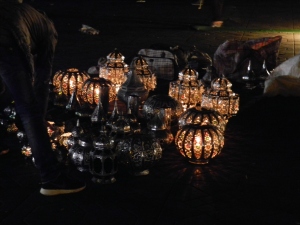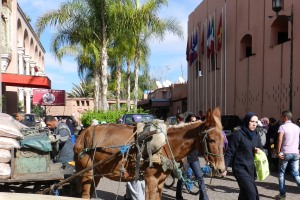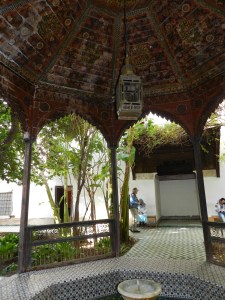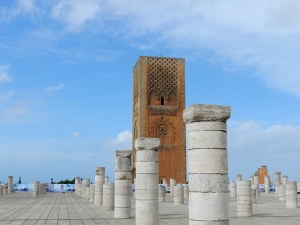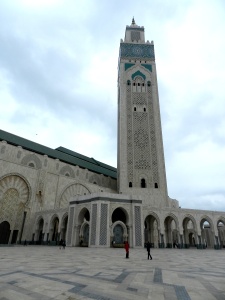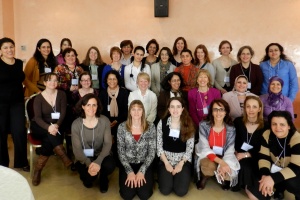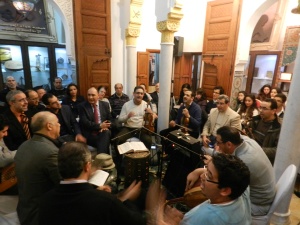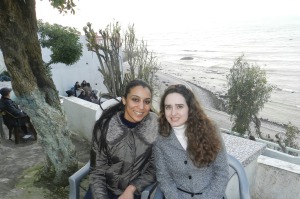Hauntingly familiar is what Morocco is. Exotic is the first adjective that comes to mind, not because everything is new, but because there is just enough familiar in a different setting to create pause.
I walk down the streets with the salmon clay tiles that have stared back at me in Israel, in Indonesia. I see the same pattern of red and white paint along the curve, indicating no parking in so many countries I’ve visited, that no one pays attention to. There is the familiar mix of palm trees, evergreens, and orange trees carefully lining the parks. As I open my hotel room’s balcony doors, the adnan, call to prayer, washes me with memories.
And yet, nowhere else I have been serves perfect mini creme brulees and macaroons. The French influence has also resulted in an interesting dialectic mix of Arabic and French that most Arabs cannot understand. Bright headscarves liven up the souks, which smell different from Jordan or Israel. While there are still smells of raw meat and vegetables, some of the spices perfuming the air cannot be found elsewhere. The prevalence of leather goods also adds a wonderful and unique component for olfactory senses. I dread shopping in sterile malls, but every trip to the greater Middle East and North Africa region finds me losing track of time as I meander along narrow alleyways and past shops that offer better birthday and holiday presents than I ever find back home.
In Marrakech, the medina, or old city, is stupendous. The large square, Place Jemaa-el-Fna, is notorious for its evening market, where crowds come to see snake charmers, hear musicians of local music, drink fresh orange juice, and eat snails, a local delicacy served in small bowls of broth with Moroccan spices. Also in the medina are some wonderful restaurants like Le Jardin, which renovated an old home and serves marvelous Moroccan fare. After a good late dinner there though, Luke, Phil, and I accomplished another requirement of visiting the medina: getting lost literally. All the shops look completely different once they are closed, and all you can see are ornate doors that were hidden by wares during the daylight. As a group, we eventually came out, near the Mosque de la Koutonbia, an easy to see icon for the old city. One of my favorite places in the medina is La Maison de la Photographie, a small museum of photographs from 1870s to 1920s. Our group stumbled upon in back in September, but I was unable to return on this trip.
While bartering in the souk is a fun pasttime, sometimes you just don’t want to buy four extra shawls to get a decent price. Spending time shopping at the Ensemble Artisanal Handicraft Center takes that stress away. The prices are fair (you can maybe get 10% off), and the quality is sometimes better than what is found in the souk. However, it’s such a good deal that the concierge at my hotel tried to tell me they didn’t sell things.
Another breathtaking aspect of Marrakech is the architecture. To be overwhelmed, be sure to wind your way through back alleys to the Dar Si Said, where for a mere 10 dirhams ($1.50), you can see stunning combinations of Moroccan lanterns, tile mosaic floors and walls with painted wooden ceilings. The vibrant colors and geometric patterns in Islamic art are one of my favorite things to see while traveling. Another palace worth visiting is Palais La Bahia, just a few steps from Dar Si Said. Bahia is more elaborate and the same price as Said but also caters to larger tour groups, so you might not have the place to yourself.
While this work trip did not allow for time to visit the Atlas Mountains or pop over to Fez, I really enjoyed the time I had to explore Marrakech. There were three opportunities I had thanks to work as well. I attended an evening reception with Dr. Jill Biden and some of our female entrepreneurs at the Palais el Badi, an old fortress palace that houses the Musee de la Photographie et des Arts Visuels. Local musicians serenaded us as we entered, and the salmon clay walls were light with various colors of light. At the Global Entrepreneurship Summit, we all sang Vice President Joe Biden happy birthday. If you’ve got to work on your birthday, it’s pretty nice to have 4,000 people singing you good wishes at 72. Lastly, beyond the amazing entrepreneurs who came through our program and who are so inspiring, we had a fabulous reception (with them of course) on the rooftop of the Pearl Hotel. It was like something out of a movie as we gazed out over the beautiful twinkling lights of the cityscape.
